Employment is a relationship between two parties regulating the provision of paid labour services. Usually based on a contract, one party, the employer, which might be a corporation, a not-for-profit organization, a co-operative, or any other entity, pays the other, the employee, in return for carrying out assigned work. Employees work in return for wages, which can be paid on the basis of an hourly rate, by piecework or an annual salary, depending on the type of work an employee does, the prevailing conditions of the sector and the bargaining power between the parties. Employees in some sectors may receive gratuities, bonus payments or stock options. In some types of employment, employees may receive benefits in addition to payment. Benefits may include health insurance, housing, disability insurance. Employment is typically governed by employment laws, organisation or legal contracts.
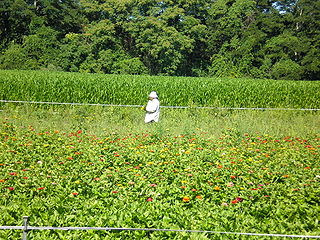
Foreign workers or guest workers are people who work in a country other than one of which they are a citizen. Some foreign workers use a guest worker program in a country with more preferred job prospects than in their home country. Guest workers are often either sent or invited to work outside their home country or have acquired a job before leaving their home country, whereas migrant workers often leave their home country without a specific job in prospect.
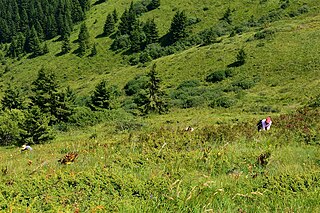
Temporary work or temporary employment refers to an employment situation where the working arrangement is limited to a certain period of time based on the needs of the employing organization. Temporary employees are sometimes called "contractual", "seasonal", "interim", "casual staff", "outsourcing", "freelance"; or the words may be shortened to "temps". In some instances, temporary, highly skilled professionals refer to themselves as consultants. Increasingly, executive-level positions are also filled with Interim Executives or Fractional Executives.

A laborer is a person who works in manual labor types in the construction industry workforce. Laborers are in a working class of wage-earners in which their only possession of significant material value is their labor. Industries employing laborers include building things such as roads, buildings, bridges, tunnels, and railway tracks. Laborers work with blasting tools, hand tools, power tools, air tools, and small heavy equipment, and act as assistants to other trades as well such as operators or cement masons. The 1st century BC engineer Vitruvius writes that a good crew of laborers is just as valuable as any other aspect of construction. Other than the addition of pneumatics, laborer practices have changed little. With the introduction of field technologies, the laborers have been quick to adapt to the use of this technology as being laborers' work.
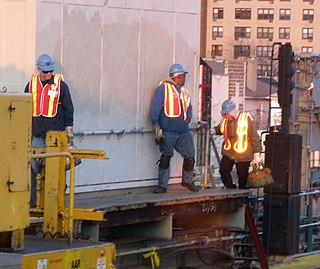
A construction worker is a worker employed in the physical construction of the built environment and its infrastructure.
Labor rights or workers' rights are both legal rights and human rights relating to labor relations between workers and employers. These rights are codified in national and international labor and employment law. In general, these rights influence working conditions in the relations of employment. One of the most prominent is the right to freedom of association, otherwise known as the right to organize. Workers organized in trade unions exercise the right to collective bargaining to improve working conditions.

A migrant worker is a person who migrates within a home country or outside it to pursue work. Migrant workers usually do not have the intention to stay permanently in the country or region in which they work.

The labor force in Japan numbered 65.9 million people in 2010, which was 59.6% of the population of 15 years old and older, and amongst them, 62.57 million people were employed, whereas 3.34 million people were unemployed which made the unemployment rate 5.1%. The structure of Japan's labor market experienced gradual change in the late 1980s and continued this trend throughout the 1990s. The structure of the labor market is affected by: 1) shrinking population, 2) replacement of postwar baby boom generation, 3) increasing numbers of women in the labor force, and 4) workers' rising education level. Also, an increase in the number of foreign nationals in the labor force is foreseen.
Contingent work, casual work, or contract work, is an employment relationship with limited job security, payment on a piece work basis, typically part-time that is considered non-permanent. Although there is less job security, freelancers often report incomes higher than their former traditional jobs.
A guest worker program allows foreign workers to temporarily reside and work in a host country until a next round of workers is readily available to switch. Guest workers typically perform low or semi-skilled agricultural, industrial, or domestic labor in countries with workforce shortages, and they return home once their contract has expired.
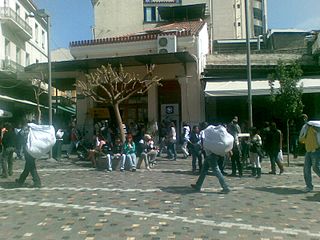
Immigration to Greece percentage of foreign populations in Greece is 7.1% in proportion to the total population of the country. Moreover, between 9 and 11% of the registered Greek labor force of 4.4 million are foreigners. Migrants additionally make up 25% of wage and salary earners.
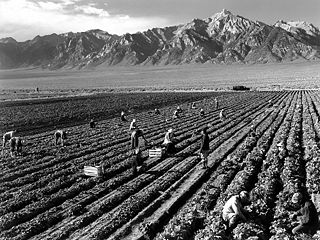
A farmworker, farmhand or agricultural worker is someone employed for labor in agriculture. In labor law, the term "farmworker" is sometimes used more narrowly, applying only to a hired worker involved in agricultural production, including harvesting, but not to a worker in other on-farm jobs, such as picking fruit.
Internal migration in the People's Republic of China is one of the most extensive in the world according to the International Labour Organization. This is because migrants in China are commonly members of a floating population, which refers primarily to migrants in China without local household registration status through the Chinese Hukou system. In general, rural-urban migrant most excluded from local educational resources, citywide social welfare programs and many jobs because of their lack of hukou status. Migrant workers are not necessarily rural workers; they can simply be people living in urban areas with rural household registration.
Labor market segmentation is the division of the labor market according to a principle such as occupation, geography and industry.

Occupational safety and health (OSH) or occupational health and safety (OHS), also known simply as occupational health or occupational safety, is a multidisciplinary field concerned with the safety, health, and welfare of people at work. These terms also refer to the goals of this field, so their use in the sense of this article was originally an abbreviation of occupational safety and health program/department etc. OSH is related to the fields of occupational medicine and occupational hygiene.
Labor rights in the American meatpacking industry are largely regulated by the National Labor Relations Board (NLRB), which regulates union organization. The Occupational Safety and Health Administration regulates the safety and health conditions applicable to workers in the American meat packing industry. According to scholars of the American meat packing industry, despite federal regulation through OSHA and industry oversight, workers in meat production plants have little agency and inadequate protections. Workers in the industry perform difficult jobs in dangerous conditions, and are at significant risk for physical and psychological harm. In addition to high rates of injury, workers are at risk of losing their jobs when they are injured or for attempting to organize and bargain collectively. Several of studies of the industry have found immigrant workers—"an increasing percentage of the workforce in the industry."
Israeli labor law provides a number of protections to workers in Israel. They are governed by the Basic Laws, the Hours of Work and Rest Law, as well as various other laws, statutes, and regulations.
Migrant workers in the United Arab Emirates describe the foreign workers who have moved to the United Arab Emirates (UAE) for work. As a result of the proximity of the UAE to South Asia and a better economy and job opportunities, most of the migrant foreign workers are from India, Nepal, Sri Lanka, Bangladesh, and Pakistan.
Almost half of international migrants are women, generally travelling as either migrant workers or refugees. Women migrant workers migrate from developing countries to high-income countries to engage in paid employment, typically in gendered professions such as domestic work. Because their work disproportionately takes place in private homes, they are vulnerable to exploitation and abuse. Wages earned are largely sent home to the originating country to support the cost of living of the family left behind.
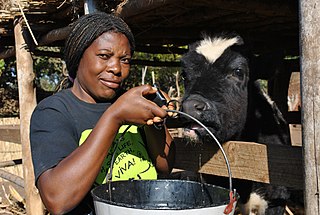
Farmworkers in the United States have unique demographics, wages, working conditions, organizing, and environmental aspects. According to The National Institute for Occupational Safety & Health in Agricultural Safety, approximately 2,112,626 full-time workers were employed in production agriculture in the US in 2019 and approximately 1.4 to 2.1 million hired crop workers are employed annually on crop farms in the US. A study by the USDA found the average age of a farmworker to be 33. In 2017, the Department of Labor and Statistics found the median wage to be $23,730 a year, or $11.42 per hour.











